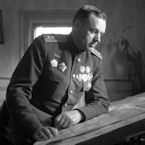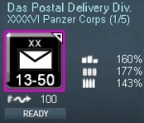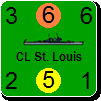DorianGray
Posts: 131
Joined: 8/2/2008
Status: offline

|
quote:
ORIGINAL: Jakerson
By spending time in army in real life I can say that. Border guards in most of countries witch these NKVD security units represent are specially trained for delaying enemy advance if country is surprise attacked. They are equipped and trained to blow up bridges, deploy mines and deploy snipers and guerilla warfare in short notice. Removing their ability for delaying would be step toward removing realism and historical use of border guards.
Whatever their training may have been, I can find no historical reference regarding to them being this effective on such a global scale in this theatre.
I think you are confused as to how historically effective they truly were. NKVD != Navy Seal OR Army Ranger
World War II operations
Prior to the German invasion, in order to accomplish its own goals, the NKVD was prepared to cooperate even with such organizations as the German Gestapo. In March 1940 representatives of the NKVD and the Gestapo met for one week in Zakopane, to coordinate the pacification of Poland; see Gestapo–NKVD Conferences. For its part, the Soviet Union delivered hundreds of German and Austrian Communists to the Gestapo, as unwanted foreigners, together with their documents. However, some NKVD units were later to fight the Wehrmacht, for example the 10th NKVD Rifle Division, which fought at the Battle of Stalingrad.
During World War II, NKVD units were used for rear area security, including stopping desertion. At the beginning of the war the NKVD formed 15 rifle divisions, which were eventually expanded to a total of 53 divisions and 28 brigades by 1945.[15] Though mainly intended for internal security, NKVD divisions were sometimes used in the front-lines, for example during the breakthrough in Crimea.[15] Unlike the Waffen-SS, the NKVD did not field any armored or mechanized units.[15]
In liberated territory the NKVD and (later) NKGB carried out mass arrests, deportations, and executions. The targets included both collaborators with Germany and non-Communist resistance movements such as the Polish Armia Krajowa. The NKVD also executed tens of thousands of Polish political prisoners in 1939–1941, inter alia committing Katyñ massacre. NKVD units were also used to wage the prolonged partisan war in the Ukraine and the Baltics, which lasted until the early 1950
|
 Printable Version
Printable Version











 A lot of folks want to rush them off to the Finnish border or somesuch thing, but I use them for delaying tactics on the actual front.
A lot of folks want to rush them off to the Finnish border or somesuch thing, but I use them for delaying tactics on the actual front. 



 New Messages
New Messages No New Messages
No New Messages Hot Topic w/ New Messages
Hot Topic w/ New Messages Hot Topic w/o New Messages
Hot Topic w/o New Messages Locked w/ New Messages
Locked w/ New Messages Locked w/o New Messages
Locked w/o New Messages Post New Thread
Post New Thread